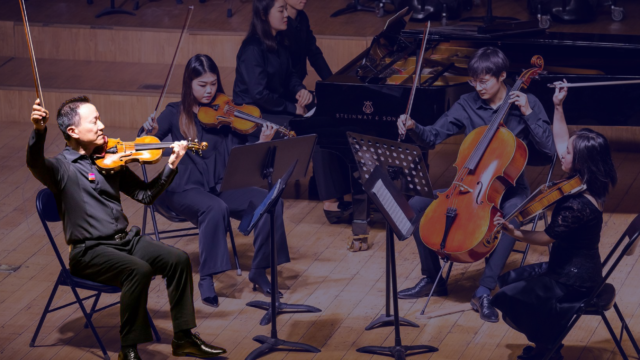Playing Your Part – Building Your Base: People and Partners in Public Policy Advocacy
Map Your Relationships
A 2017 survey by the League of American Orchestras showed that 83% of responding orchestras are already talking about public policy inside their organizations. Many arts organizations don’t have a lot of resources—money, time, or staff—to devote to lobbying. That makes working smarter more important than working harder, and it’s smart to learn just what your assets are, early on.
- Keep policy activity on your board and staff meeting agendas for frank discussion.
- Determine what relationships trustees, volunteers, staff, and musicians have with public officials to identify your best “connected” people to contact your Representatives or Senators on a pending vote.
- Keep an active list of the people who know people who can get the attention of policy leaders, and put that list to use.
Create Your Orchestra’s Public Policy Advocacy Network
The ultimate objective of this activity is to identify lead contacts who can engage as many other supporters as possible in the advocacy effort at pivotal moments. Make a clear designation of the following:
- A public policy designee for your trustees, often the chairperson of the board’s government affairs committee if you have one, or someone designated by the committee or board chairperson.
- Public policy designees for the orchestra staff and the volunteer association.
- Public policy designees for your musicians. This might be the ICSOM (International Conference of Symphony and Opera Musicians) or ROPA (Regional Orchestra Players’ Association) delegate in an orchestra. Participation, of course, is entirely voluntary; while the League, ICSOM, and ROPA are separate organizations, musicians often hear about policy developments from each of these groups.
Invest in Coalition Building
Don’t go it alone. Public policy advocacy is most effective when done in coalition; by presenting a broad and unified front, you strengthen your impact. The objective of a coalition is to achieve a specific goal—not to resolve everything under the sun. However, a frequent byproduct of working in coalition for one policy goal is greater understanding of other issues, and identifying new areas of partnership as dialogue occurs. This byproduct of coalition building sometimes exceeds the value of the original policy goal itself.
- Welcome a diverse and inclusive array of partners. An effective coalition often has partners from different disciplines, with different budget sizes and stakeholders that share common concerns.
- Think beyond the arts to include groups that work in the human services, religious, educational, environmental, and other fields that have a common stake in an issue. For example, you may find common interests with the local transportation authority and/or chamber of commerce if a local economic development project affects all of you.
- Don’t forget that other elected officials—mayors, city council members, governors—can and should be asked to support your efforts. National associations for public officials, such as the U.S. Conference of Mayors, have been recruited for such purposes by national arts organizations.
- Contact the League for specific advice about coalition partners. We’re closely networked at the national level with organizations that likely have affiliates in your state and community, including the full range of arts disciplines, education associations, major nonprofit organizations like the American Red Cross and United Way Worldwide, and even groups in the conservation community like the Humane Society and World Wildlife Fund.
- State networks: Join your state arts alliance – a directory is here from Americans for the Arts and become familiar with state-by-state governmental funding levels – see the National Assembly of State Arts Agencies overview. Also, join your state nonprofit association – the National Council of Nonprofits state directory is a great starting place.
- Understand that the partners in a coalition don’t have to agree on all issues at all times (and probably won’t).
- Coalitions can be formalized or as ad hoc as you choose. The point is to establish contact and reach an agreement that the institutions should work together in support of policy that benefits your community.
- Divvy up the work of initiating contacts with policymakers. Just as you’ve taken stock of your organization’s connections to elected officials, take this opportunity to map out whom the other groups in the coalition know to create that personal connection.
- Review the issues and discuss your positions as a group prior to any meeting with a policy leader. Make sure you are all in basic agreement about what you want to achieve in the meeting—be clear about the purpose. A meeting with a policymaker is neither the time nor place to bring up extraneous issues or disagreements among you.
Article Topics:
Related Links & Assets
Related
-
News | Advocacy
Preparing for 2026 and Beyond: NEA Grants, Pernambuco, and More
-
Learn | Advocacy
2026 Calendar of Opportunities: 119th Congress, 2nd Session
-
News | Advocacy
Alert: Agreement Nears on New Rules for Bow Owners
Become a member
Thank you for your interest in the League of American Orchestras! We are dedicated to advancing the orchestral experience for all.
Join Now
